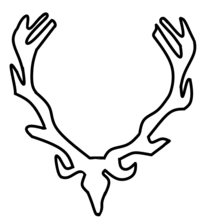|
118th Jäger Division
The 118th Jäger Division (German: 118. Jäger-Division) was a light infantry division of the German Army in World War II. It was formed in April 1943, by the redesignation of the 718th Infantry Division which had itself been formed in April 1941. It was transferred to Yugoslavia in May 1941, to conduct anti partisan and Internal security operations. It took part in the Battle of the Sutjeska in June 1943, and fought partisans in Bosnia before being sent to the Dalmatian coast to guard against Allied landings in the summer of 1944. It then fought on the Eastern Front in the Vienna offensive during the final months of the war before surrendering to the British in Carinthia in May 1945.[2] FormationThe 118th Jäger Division was formed under the name 718th Infantry Division following an order dated 16 April 1941, under which each of Germany's fifteen military districts (Wehrkreis) was required to raise two additional infantry regiments for the war effort. Each of these pairs would become its own infantry division, for a total of fifteen divisions that would go on to form the divisions of the fifteenth Aufstellungswelle. The 718th Division consisted of the two regiments raised in Wehrkreis XVIII (Salzburg), the Infantry Regiments 738 and 750. Like the other divisions of the fifteenth wave, the 718th Division consisted of only two rather than the standard three infantry regiments.[3] Background The main purpose of the German jäger divisions was to fight in adverse terrain where smaller, coordinated formations were more facilely combat capable than the brute force offered by the standard infantry divisions. The jäger divisions were more heavily equipped than mountain division, but not as well armed as a larger infantry formation. In the early stages of the war, they were the interface divisions fighting in rough terrain and foothills as well as urban areas, between the mountains and the plains. The jägers (it means hunters in German), relied on a high degree of training and slightly superior communications, as well as their not inconsiderable artillery support. In the middle stages of the war, as the standard infantry divisions were downsized, the Jäger structure of divisions with two infantry regiments, became the standard table of organization.[4] Area of operations
Commanders
Order of battleWikimedia Commons has media related to 118. Jäger-Division (Germany).
ReferencesNotes
Bibliography
|
||||||||||||||||||||||||
Portal di Ensiklopedia Dunia
